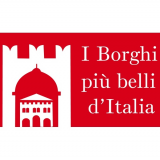
 I borghi più belli d'Italia
I borghi più belli d'Italia
Italian little Italies: Maratea. A village suspended between sky and sea
- WTI Magazine #173 Mar 16, 2024
-

 I borghi più belli d'Italia
I borghi più belli d'Italia
The most important monument to see in Maratea, the beautiful Basilicata village in the Potenza province, is the Statue of the Redeemer or Christ the Redeemer, a sculpture placed on the top of Mount San Biagio. It was made with a special mixture of cement mixed with flakes of Seravezza marble by Florentine artist Bruno Innocenti between 1963 and 1965. Standing 69,32 foot tall, it is the second largest statue in Italy.
Worth seeing are the main churches, especially that of S. Maria Maggiore (15th cent., but rebuilt in the 19th cent.), the Annunziata with its 16th-century painting of the same name, and the Immacolata with its 14th-century fresco in the crypt.
The small church of St. Vitus, the tallest building in the Borgo di Maratea, is a hidden gem of medieval sacred art. It houses several 14th- and 15th-century frescoes.
Palazzo De Lieto, located near the church of S. Maria Maggiore, is a historic mansion as well as a former hospital, former town hall and school, used as a picture gallery and exhibition venue.
Opposite the church of the Annunziata is the column of St. Biagio, patron saint of the town, erected in 1758 through the munificence of Maratha merchants living in Naples.
In front of the Church of Our Lady of Sorrows stands the obelisk of Our Lady of Sorrows, erected in 1788 by the interest of Gerardo Laurelli.
In the center of Vitolo Square is a fountain in which towers La Sirena, a bronze sculpture by Alessandro Romano in 1996. It depicts a mythical ancient coat of arms of the town supporting the new one, consisting of three towers and a double-headed eagle.
Getting lost in the alleys of the village of Maratea is an evocative experience. You go back in time to a small world of stairs, flowered balconies, small churches and stores.
The long avenue called the piazza, located in the center of the Borgo di Maratea, is a very pleasant walk.
One of the most beloved delights of Marateans, at the end of the day, is to enjoy the sunset over the Gulf of Policastro from the viewpoint known as Pietra del Sole. The suggestive name is due to the fact that this is the spot perpetually touched by the sun's rays, since direct light is missing from early November to early February on the rest of the Borgo.
The History
Maratea was probably born in the early medieval centuries as a Byzantine village in an anti-Longobard function or as a Longobard village in an anti-Byzantine function. The place name, having Greek roots (from μάραθον, i.e., fennel), would lean toward the first hypothesis: however, hard data are lacking. The name Maratea appears for the first time in a document from 1079.
In the Middle Ages the community of Maratea resided in the settlement on top of Mount San Biagio, popularly called Castello because it was fortified.
The strategic importance of the site meant that Maratea was not enfeoffed. This and the proximity to the sea guaranteed the community a certain economic prosperity. Since the commercial aspirations of the center on the mountain were frustrated by its location, a new settlement developed on the northern slope of the same mountain, halfway between the coast and the summit: it was popularly called Borgo and today is the historic center of the town.
From the 16th to the 18th century, Maratea's landing place was among the most important commercial ports of call in the Tyrrhenian Sea. Therefore an entrepreneurial class developed, with considerable social weight. In this sense, it is indicative that the historic center, unlike similar Lucanian settlements, does not develop around a church or a castle, but around a long avenue called the piazza, that is, where the doors of the stores face.
After national unity was achieved, Maratea distinguished itself as a center of studies with numerous schools and was firmly at the bottom of the regional illiteracy statistics.
In the post-World War II period, Maratea was involved in the tourism boom in the South. Although industrial settlements no longer exist, Maratea still records one of the highest per capita incomes in southern Italy.
The feast of the translation of the relics of St. Biagio falls from the Saturday before the first Sunday in May until the following Sunday. According to an agreement of 1781, following a request from the mayor to the Rector of the Basilica, on Thursday the silver simulacrum of the saint is carried from the Castle to the Borgo in a striking procession. The statue is covered by a red mantle, which is removed upon arrival in the Borgo. On the Saturday before the second Sunday of the month, the statue is carried in procession through the square and alleys of the historic center.